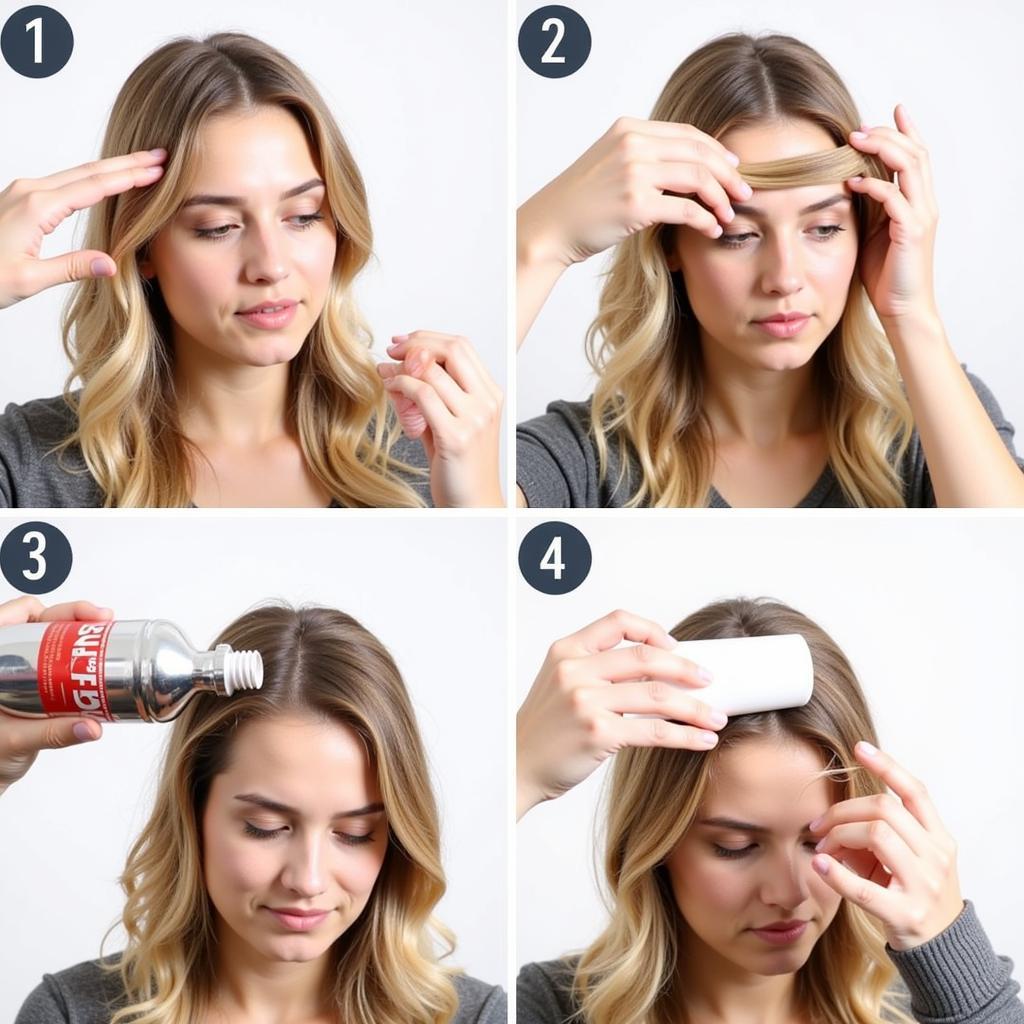Mixing two hair colors can seem like a daunting task, but with the right knowledge and approach, it can open up a world of personalized color possibilities. Whether you’re aiming for a subtle shift in tone or a dramatic transformation, understanding the principles of color mixing can empower you to achieve your desired look.
Understanding the Basics of Hair Color Mixing
Before diving into the world of mixing hair dyes, it’s essential to grasp some fundamental concepts. Hair color is typically categorized into levels, indicating lightness or darkness, and tones, which refer to the underlying color. Knowing your current hair level and tone is crucial for predicting the outcome of your color mixture. For instance, mixing two light colors will likely result in a pastel shade, while combining a light and dark color might create a richer, deeper hue. Just like [how to make brown out of primary colors](https://colorbox.com.vn/how-to-make-brown-out of-primary-colors/), mixing hair colors involves understanding the underlying tones.
Why Mix Hair Colors?
Many people choose to mix hair colors to achieve a unique shade not readily available in pre-mixed formulas. It allows for customization and creativity, enabling you to tailor the color precisely to your preferences. Mixing can also be a cost-effective way to utilize leftover dye or create a transition shade between two colors. It’s all about exploring possibilities and creating something truly your own.
What You Need to Know Before You Start
Mixing hair color isn’t as simple as combining two shades. Factors like your hair’s porosity (its ability to absorb moisture) and existing color can significantly influence the final result. If your hair is porous, it may absorb color more quickly and intensely. It’s always recommended to perform a strand test before applying the mixture to your entire head. This helps you preview the color and avoid any unpleasant surprises. You also need to ensure both dyes are from the same brand and have a similar chemical composition to prevent adverse reactions. Consider consulting with a professional stylist, especially if you’re attempting a complex color mixture or have previously treated hair. This professional guidance can help mitigate risks and ensure you achieve the desired results.
Choosing the Right Colors to Mix
Selecting the right colors to mix is where your artistic vision comes into play. Think about the desired tone and level you’re aiming for. Do you want a warm or cool shade? Are you aiming for a subtle change or a bold statement? Similar to understanding what colors go with orange and black, knowing which hair color tones complement each other is essential for successful mixing. The color wheel can be a helpful tool for visualizing how different colors interact. Complementary colors, located opposite each other on the wheel, can create vibrant, dynamic hues. Analogous colors, situated next to each other, tend to blend seamlessly for a more harmonious effect. Remember that less is more, especially when starting. It’s easier to add more color than to remove it.
How to Mix Hair Dye Safely
Safety is paramount when working with hair dyes. Always wear gloves to protect your skin and work in a well-ventilated area to minimize exposure to fumes. Follow the manufacturer’s instructions carefully for each dye you’re using. Mix the dyes in a non-metallic bowl using a plastic or wooden utensil to avoid any chemical reactions. Knowing how to properly mix hair dye is as important as knowing how do you mix hair color for achieving optimal results.
 Applying the mixed hair dye to a section of hair.
Applying the mixed hair dye to a section of hair.
Tips for Successful Hair Color Mixing
- Start Small: Begin with a small amount of dye to test the color and adjust the ratio as needed.
- Keep Records: Note down the specific dyes and ratios used for future reference.
- Consider the Developer: The developer strength can impact the final color. A lower volume developer will deposit less color, while a higher volume developer will lift and deposit more color.
- Don’t Mix Different Brands: Mixing different brands can lead to unpredictable results and potential damage.
- Seek Professional Advice: If you’re unsure about anything, consult with a qualified hair stylist. Understanding the nuances of color, like what color does red and grey make, can help inform your hair color mixing choices.
“When mixing colors, understanding the underlying tones is crucial. A little bit of knowledge can go a long way in achieving the desired result,” says renowned colorist, Amelia Dubois. She adds, “Don’t be afraid to experiment, but always prioritize hair health.”
Conclusion
Mixing two hair colors together can be a rewarding experience, allowing you to create a personalized and expressive look. By understanding the basics of color theory, following safety precautions, and practicing mindful experimentation, you can unlock the potential for endless color possibilities and achieve the hair color of your dreams. Remember, understanding what colors make a dark purple applies to hair dye as well. So, go ahead and explore the vibrant world of color mixing!
FAQ
- Can I mix two different brands of hair dye?
- How do I determine my hair’s porosity?
- What is the role of the developer in hair color mixing?
- How can I fix a hair color mixing mistake?
- What are some common hair color mixing mistakes to avoid?
- What should I do if I have an allergic reaction to hair dye?
- Where can I find more information about hair color mixing?
Need help with mixing hair colors? Contact us at 0373298888, email [email protected], or visit us at 86 Cau Giay, Hanoi. Our 24/7 customer service team is ready to assist you.
